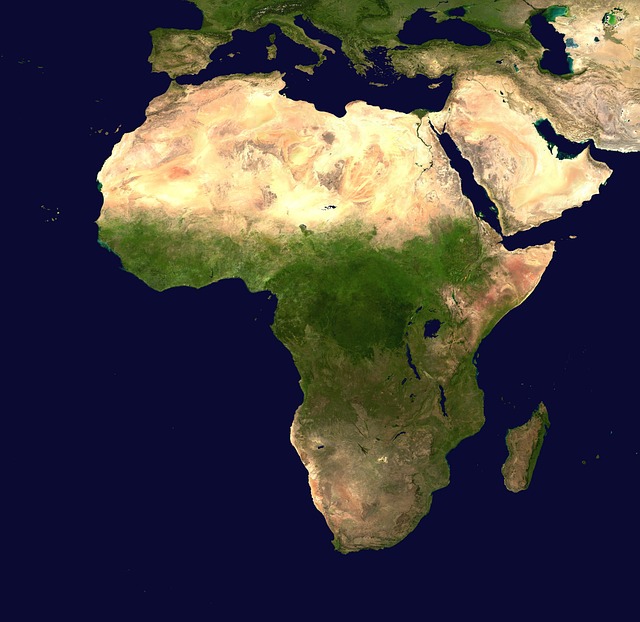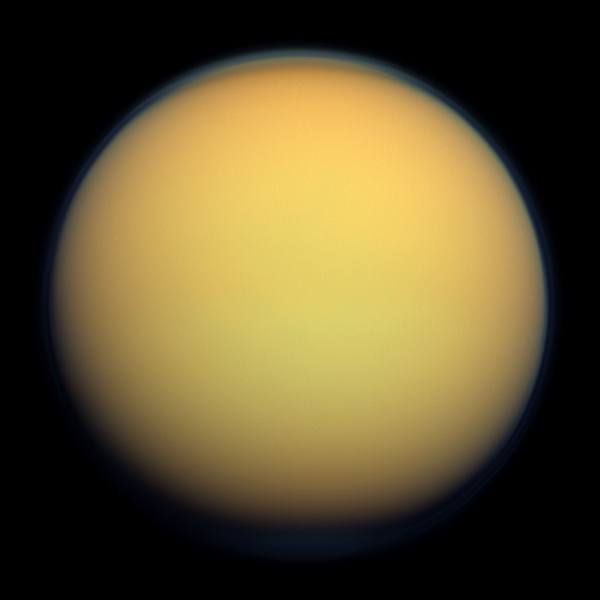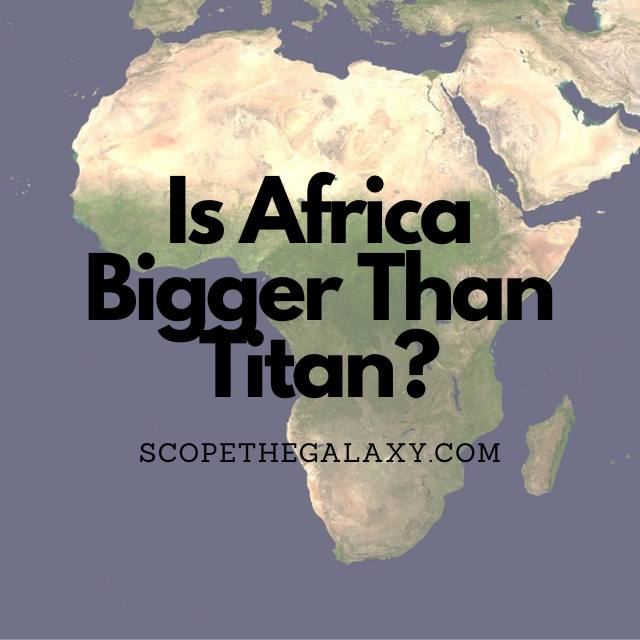*This post may contain affiliate links. This means we may make a commission if you purchase an item using one of our links*
Africa is the second biggest continent on Earth and has a surface area of 30.3 million sq. kilometers and a volume of 1.21 billion cubic kilometers while Titan is the second largest moon and a spherical entity with a surface area of 83 million sq. kilometers and a volume of 71.6 billion cubic kilometers. It only makes sense that Titan would be bigger as it is a spherical object whilst the African continent is a flat land mass.
Discover the main features of each body and what makes both Africa and Titan as big as they are in the grander scheme of things.
How Big Is Africa?

Africa is the Earth’s second largest continent covering a total area of approximately 30.3 million square kilometers, equal to about 20% of Earth’s total land mass or 6% of the planet’s surface area. Africa possesses the world’s largest desert, plus it has the longest river of any continent, the Nile.
Africa is the second highest populated continent on Earth. The continent has 54 countries, including Egypt, Nigeria, and Kenya, and it accounts for roughly 17% of the world’s population, with more than 1.4 billion people.
There are eight main physical regions of Africa: the Sahara, the savanna, the rainforest, the Great Lakes, the Sahel, the Ethiopian Highlands, the Swahili Coast, and southern Africa. The Sahara Desert extends over the northern third of Africa and is one of the most inhospitable places on Earth. Its size is 9.2 million square kilometers – roughly the same size as the entire United States.
The African savannah is a vast grassland that covers most of the African continent (around 65%). It extends from the Red Sea at the east to the Atlantic Ocean in the west and from Senegal in the north to Sudan in the south.
A savannah is a type of landscape that consists of grasslands with few trees, bushes, or shrubs. The grasses are typically short but can grow up to almost four meters tall. The dominant vegetation is acacia and baobab trees, which provide shade and shelter for animals during daytime hours.
Africa possesses some of the world’s highest mountains; Mount Kilimanjaro is the tallest, which rises 19,341 feet from its base near the equator to its peak in Tanzania. Africa extends to a length of 8,000km between its northern and southern extremities in Tunisia and South Africa; its width of 7,400km stretches from Xaafuun Point in Somalia to Almadi Point in Senegal.
The thickness of Earth’s crust ranges from 5 to 70km and is generally thicker under continental land where it averages 40km. Taking this figure and multiplying it by Africa’s surface area, we can calculate the rough volume of the continent at 1.21 billion cubic kilometers.
This might sound like a sizable volume, but it’s no match for the 71.6 billion cubic kilometers in volume for the second biggest moon in our solar system.
How Big Is The Moon Titan?

Titan is the largest of Saturn’s moons and the second largest satellite in our solar system (following Jupiter’s moon Ganymede). It is the only moon in the Milky Way that has clouds and a planet-like atmosphere.
Titan has a diameter of 5,150 km and a surface area of 83,000,000 sq. km. While its width falls short of the African continent overall stature, Titan’s surface area is far more vast thanks to its spherical body (compared to the flat land mass that is Africa). This surface area gives Titan an impressive volume of 71,600,000,000 cubic km.
This moon is so fascinating to scientists that they will launch the $1 billion drone “Dragonfly” to explore its surface. Titan has a thick atmosphere; because of this, the moon experiences a methane cycle of evaporation and condensation that creates rain, clouds, seas, and rivers. Other than Earth, Titan is the only body in the Milky Way that shows clear evidence of stable bodies of surface liquids.
The moon’s surface is one of the most Earth-like places in the Milky Way, though there are some vast differences. Firstly, the temperature is far, far colder, with an average surface temperature of −179.5 °C. And Titan’s gravity is only 14% of the Earth’s gravity, which means that a person weighing 100 kg on Earth will only weigh 14 kg on Titan.
Dutch astronomer Christiaan Huygens first discovered the moon in 1655 and named it Saturni Luna (Latin for “Saturn’s moon). It was in 1847 that English astronomer John Herschel suggested that the moon be renamed Titan from Greek mythology.
Scientists aren’t entirely sure about Titan’s origins but get some clues from its atmosphere. Instruments measuring the isotopes discovered that the ratio of Titan’s nitrogen isotope most closely resembles comets from the Oort Cloud – billions of icy bodies which orbit the Sun from a distance of 5,000 to 100,000 astronomical units.
This nitrogen ratio suggests that the moon was created from the same disc of dust and gas that formed the Sun.
Titan orbits at a distance of roughly 1.2 million kilometers from Saturn, a planet that is approximately 1.4 billion kilometers from the Sun. This vast distance means that sunlight takes around 80 minutes to reach Titan (compared to around eight minutes on Earth), and the light is 100 times fainter on this moon than we experience on Earth.
Summary
Being a continent Africa is very big in its own right is significantly longer when you consider its diameter over Titan.
However, when you take into account all metrics, Africa doesn’t hold up at all to Titan’s surface area where this natural satellite is almost 3 times its size and around 70 times bigger in volume.

